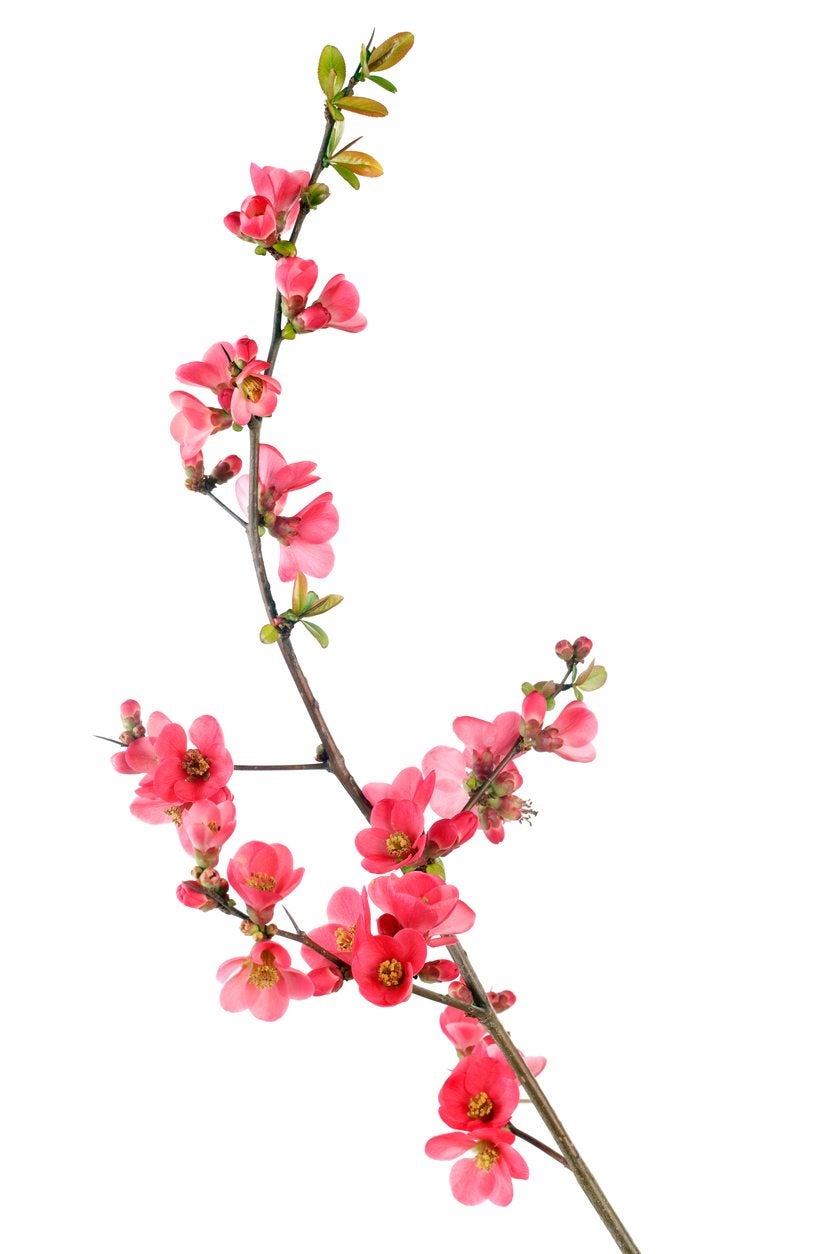Quince Propagation: How To Grow Quince From Cuttings


Quince are one of the earliest plants to bloom, with the hot pink blooms often accented by a backdrop of snow. There are both flowering and fruiting quince, although they are not necessarily exclusive. There are many varieties of both types available but some are not commonly found.
Can you take cuttings from quince? Yes, this would be a great way to continue an heirloom plant or get plants from a friend or neighbor that has a variety you covet. A few tips on quince propagation should have you on your way to success. Read on to learn how to grow quince from cuttings.
Can You Take Cuttings from Quince?
The fruits are not as popular today as they were several centuries ago, but quince trees are still popular for their early season color show. Quince seedlings are fairly easy to make through cuttings. Rooting quince plants is not hard, but the method depends upon which variety of plant you have. The flowering variety seems to be easier than the fruiting variety.
Fruiting cuttings may sprout but there may not be fruit and it may not be true to parent. Hardwood is best for propagating quince cuttings. The cuttings need to be harvested before bloom time and when the plant is still dormant. That would be winter to very early spring. Use very sharp, clean implements to take your cuttings to prevent damage to the plant and introduction of disease. You will want to take this year's growth, so select a branch with hardened but younger wood.
Remove 6 to 12 inches (15-30 cm.). Be sure to include several growth nodes on the cutting. You may keep cuttings in water for a couple of weeks but best rooting will result from fresh cuttings.
Rooting Quince Plants from Flowering Variety
Flowering quince propagation is easier than the fruiting varieties. In many cases, all you need to do is stick the cut end into soil and keep it moderately moist and eventually it will root. If cuttings were taken in early winter, insert the cut end at a 45 degree angle into moist soil.
You may choose to dip the end into a rooting hormone prior, but it is not necessary. Keep containers in a cool area where no freezing will take place. Keep the soil lightly moist but never soggy. Plant cuttings outside in spring when soil warms up enough to work it.
Sign up for the Gardening Know How newsletter today and receive a free copy of our e-book "How to Grow Delicious Tomatoes".
Propagating Quince Cuttings from Fruiting Types
Fruiting quince can take several months to root. Take cuttings in winter to early spring that are the same length as the flowering varieties. Use rooting hormone prior to planting the cuttings in moistened, horticultural sand. Since the cuttings take months to root and need to be kept moist, this soilless medium helps prevent rot and encourage drainage.
Cuttings should be inserted 3 to 4 inches (8-10 cm.) into the sand. Keep the container indoors in bright light until spring. You may choose to cover the container with plastic to conserve heat and moisture, but be sure to remove the plastic once per day to air the container and prevent rot. Plant cuttings in a trench in spring 6 inches (15 cm.) apart. Cuttings should be rooted and well established in a year.

Bonnie Grant is a professional landscaper with a Certification in Urban Gardening. She has been gardening and writing for 15 years. A former professional chef, she has a passion for edible landscaping.